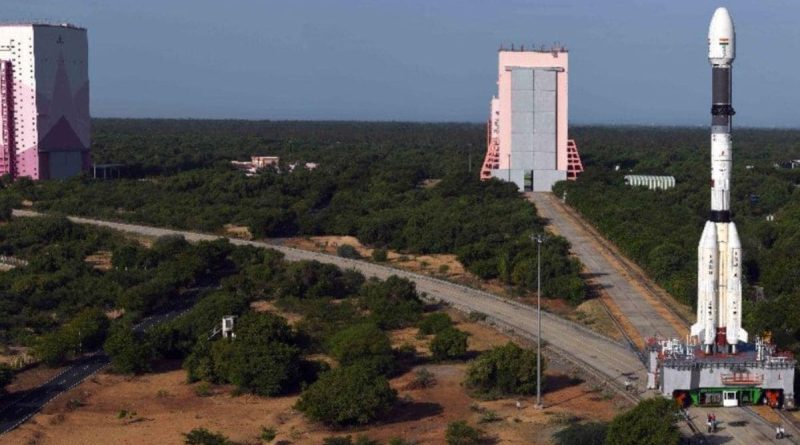India plans to construct an upgraded third rocket launch pad in Sriharikota in preparation for its 100th liftoff.
Capital of India:
Prioritizing the mission to send an Indian to the Moon, the cabinet headed by Prime Minister Narendra Modi has authorized the construction of a large launch pad in Andhra Pradesh’s Sriharikota. The cabinet, in a separate decision today, approved the building of a third launch pad at the Satish Dhawan Space Centre (SDSC) in Sriharikota. This launch pad will be the point of departure for an Indian astronaut to land on the Moon by the year 2040.
Sriharikota, a spindle-shaped island located approximately 100 km north of Chennai on the coast of the Bay of Bengal, already houses two launch pads. The third launch pad is expected to be operational in four years and will require Rs 3,984 crore for construction. It will be able to accommodate India’s ‘giant rocket’, the Next Generation Launch Vehicle (NGLV).
“The approval by the Cabinet today for establishing the Third Launch Pad at Sriharikota, Andhra Pradesh will fortify our space sector and motivate our scientists,” Mr Modi stated on X.
Sriharikota is also home to India’s initial private launch pad established by Agnikul Cosmos Pvt Ltd, from which the rocket Agnibaan Sorted was launched on May 30, 2024 for a sub-orbital flight.
The NGLV, standing at almost 90 meters – taller than the Qutab Minar – will have three times the current payload capacity with 1.5 times the expense compared to LVM3. It will feature reusability, leading to cost-effective access to space and modular eco-friendly propulsion systems.
An amount of Rs 8,239 crore has been allocated by the government to develop the NGLV, which is expected to be completed in 96 months.
The objectives of the Indian space program necessitate a new breed of human-rated launch vehicles with high payload capacity and reusability. Therefore, the development of the NGLV has been initiated to transport a maximum payload of 30 tonnes to low-Earth orbit with a reusable first stage.
India has attained self-sufficiency in space transportation systems for launching satellites weighing up to 10 tonnes to low-Earth orbit and 4 tonnes to geo-synchronous transfer orbit through the existing operational launch vehicles.
Up to this day, Sriharikota has witnessed 99 notable launches and the upcoming liftoff of the Geo-Synchronous Launch Vehicle Mark-2 will mark the 100th launch of a new-generation navigation satellite.
“The first launch pad in India is utilized for launching the Polar Satellite Launch Vehicle (PSLV) and the newer second launch pad is capable of launching both PSLV and Launch Vehicle Mark-3. The third launch pad, once operational, will launch NGLV and with some enhancements, it can potentially be used to send an Indian to the Moon,” stated Dr V Narayanan, Chairman of the Indian Space Research Organisation (ISRO).
The third launch pad is designed to have a versatile configuration to support not only the NGLV but also the LVM3 vehicles with semi-cryogenic stage as well as expanded versions of NGLV.
It will be realized with maximum involvement from the industry by leveraging ISRO’s expertise in establishing the previous launch pads and extensively utilizing the current launch complex facilities.
Presently, the Indian Space Transportation Systems rely entirely on two launch pads, namely the first launch pad and the second one.
The first launch pad was established 30 years ago for the PSLV and continues to provide launch assistance for the PSLV and the SSLV. The second launch pad was primarily set up for the GSLV and the LVM3, and also serves as a backup for PSLV.
The second launch pad has been operational for nearly 20 years and has boosted the launch capacity to support commercial missions of PSLV/LVM3 along with national missions including the Chandrayaan-3 mission. It is currently being prepared to launch the human-rated LVM3 for the Gaganyaan missions.
The expanded vision of the Indian space program during the ‘Amrit Kaal’ era, including the Bharatiya Antariksh Station (BAS) by 2035 and an Indian-crewed lunar landing by 2040, requires a new generation of heavier launch vehicles with innovative propulsion systems, which cannot be catered to by the current launch pads.
The swift establishment of a third launch pad to serve a heavier class of next-generation launch vehicles and as a backup for the second launch pad is crucial to meet the evolving space transportation needs for the next 25-30 years.
India is establishing a secondary launch site at Kulasekarapattinam, a coastal village in Thoothukudi district of Tamil Nadu. The facility is being developed across 2,350 acres and is intended for launching small rockets like the Small Satellite Launch Vehicle (SSLV) and smaller rockets manufactured by India’s private enterprises. PM Modi laid the foundation stone on February 28, 2024.

